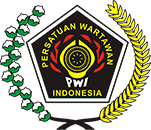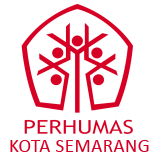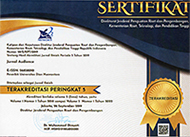ANALISIS TINDAK TUTUR HUMAS PT. KERETA API INDONESIA (PERSERO) DAERAH OPERASI 4 SEMARANG DALAM MENSOSIALISASIKAN SOP TENTANG REKOMENDASI IBU HAMIL (STUDI KASUS IBU MELAHIRKAN DI KA KERTAJAYA LEBARAN)
DOI:
https://doi.org/10.33633/ja.v2i1.2696Abstract
AsbtrakPT. Kereta Api Indonesia (Persero) memiliki berbagai macam pedoman yang digunakan untukmengimplementasikan 4 pilar perusahaan. Khususnya adalah Keselamatan, Ketepatan Waktu,Keamanan dan Kenyamanan. Salah satu peraturan yang di publikasikan adalah peraturan khususuntuk ibu hamil sebagai pedoman keselamatan bagi penumpang. Umumnya, penumpangibu hamil yang menempuh perjalanan jauh dengan menggunakan kereta api. Tujuan daripenelitian ini adalah untuk mengetahui bagaimana proses sosialisasi SOP No. 1/KS.102/II/MMH/9001/2017 yang dilakukan Humas kepada ibu hamil tentang peraturan perusahaandengan menggunakan teori tindak tutur. Penelitian ini menggunakan metode wawancara,observasi dan dokumentasi. Teori yang digunakan dalam penelitian ini menggunakan teoritindak tutur milik John Searle. Hasil penelitian menunjukan bahwa Humas dapat menyampaikantuturan dengan jelas kepada penumpang. Tindak tutur lokusi menyampaikan pernyataan isitertentu untuk mendapatkan hubungan kerja sama yang baik dengan penumpang. Tindaktutur ilokusi disampaikan melalui berbagai media, antara lain media massa, media audio visualberupa KA TV, kegiatan Humas seperti himbauan dari announcer, talkshow dan jumpa persserta iklan media massa berupa roll banner, dan spanduk di stasiun. Tindak tutur perlokusimemberikan hasil bahwa dominasi penumpang paham dan melaksanakan sesuai denganperaturan yang telah dibuat oleh perusahaan.Kata Kunci : PT. KAI (Persero), Tindak Tutur, Sosialisasi AbstractPT. Kereta Api Indonesia (Persero) has a variety of guidelines that are used to implement the4 pillars of the company. Especially is Safety, Timeliness, Security and Comfort. One of theregulations published is a special regulation for pregnant women as a safety guideline forpassengers. Generally, passengers of pregnant women who travel long distances by train. The purpose of this study was to find out how the process of socializing SOP No. 1 / KS.102 / II / MMH / 9001/2017 conducted by PR to pregnant women about company regulations usingspeech act theory. This research uses interview, observation and documentation methods. Thetheory used in this study uses John Searle's theory of speech acts. The results of the study showthat Public Relations can convey speech clearly to passengers. Location speech acts conveycertain content statements to get a good working relationship with passengers. Illocutionaryspeeches were delivered through various media, including mass media, audio-visual mediain the form of TV trains, public relations activities such as appeals from announcers, talkshows and press conferences and mass media advertisements in the form of roll banners, and banners at stations. Perlokusi speeches result that the dominance of passengers understands and executes in accordance with the regulations made by the company.Keywords: PT. KAI (Persero), Speech Acts, SocializationDownloads
Published
2019-07-24
Issue
Section
Articles
License
Authors who publish with this journal agree to the following terms:
- Authors retain copyright and grant the journal right of first publication with the work simultaneously licensed under a Creative Commons Attribution License that allows others to share the work with an acknowledgment of the work's authorship and initial publication in this journal.
- Authors are able to enter into separate, additional contractual arrangements for the non-exclusive distribution of the journal's published version of the work (e.g., post it to an institutional repository or publish it in a book), with an acknowledgment of its initial publication in this journal.
- Authors are permitted and encouraged to post their work online (e.g., in institutional repositories or on their website) prior to and during the submission process, as it can lead to productive exchanges, as well as earlier and greater citation of published work (See The Effect of Open Access).





















